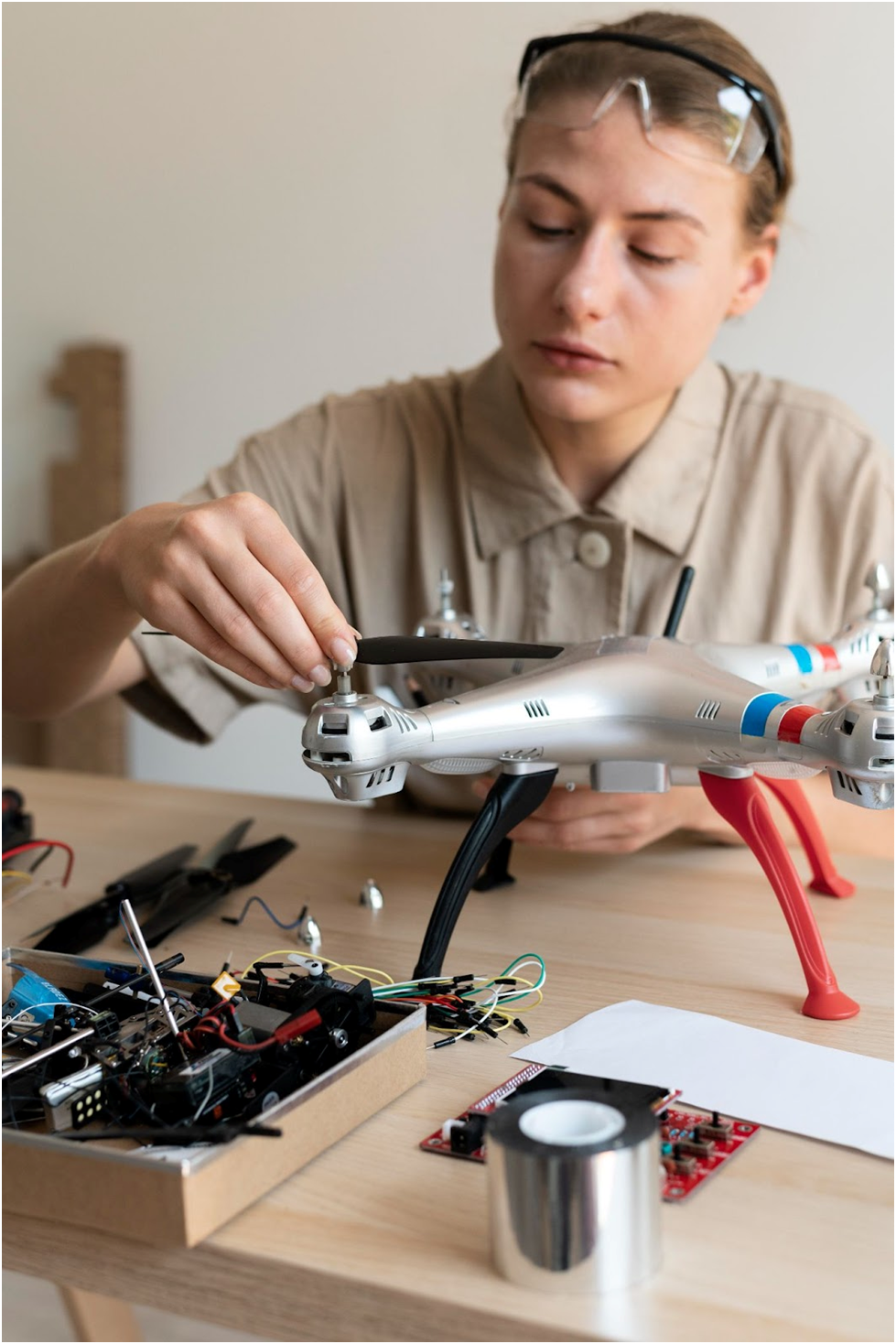Why Your Drone Keeps Losing GPS Signal – Causes and Solutions
By Damon Johnson, Founder of Raising Drones
There’s nothing more frustrating than flying your drone and suddenly getting that dreaded “No GPS Signal” message. One moment, you’re soaring through the skies, and the next, you’re stuck wondering if your drone is about to plummet back to Earth. But don’t panic – this problem is more common than you think, and there are several reasons why your drone might be losing its GPS signal.
What Causes GPS Signal Loss in Drones?
Let’s break down the reasons why your drone might be saying goodbye to GPS:
1. Obstructions and Interference
Your drone relies on GPS satellites to navigate, and anything blocking that line of sight can mess with the connection. Buildings, trees, power lines, and even heavy cloud cover can obstruct the signal. In more urban areas, the signal can bounce off buildings or other structures, leading to a “reflected” GPS signal. This might confuse your drone or cause it to lose connection.
2. Magnetic Interference
Drones are equipped with a compass to help them maintain orientation, and strong magnetic fields can throw off that compass. When this happens, the GPS signal may become unstable. You’ll notice the drone acting erratically or losing its GPS connection altogether. Magnetic interference is often caused by large metal objects like cranes, metal roofs, or even buried electrical cables.
3. Weak GPS Signal
Some areas simply don’t have a strong GPS signal. If you’re flying in remote locations with minimal GPS coverage or even near the poles (where GPS satellites are less abundant), you might find that your drone struggles to lock onto a signal. This can happen in areas with lots of open space or places far from major cities.
4. Drone Firmware and Software Issues
It’s always a good idea to keep your drone’s firmware up-to-date. Sometimes, outdated software can lead to GPS errors. Drone manufacturers often release updates that improve GPS performance, so don’t skip those firmware updates – they could be crucial in solving GPS issues.
5. Battery Problems
If your drone’s battery is low or has any issues, it can affect its performance, including the GPS signal. The GPS system uses power from the drone’s battery, so a low charge might cause instability, especially if the battery isn’t performing optimally.
6. High Interference from Other Signals
In crowded airspaces or busy areas with lots of drones (like during a large event), the sheer number of signals in the air can cause interference. Drones rely on a specific range of frequencies to communicate with GPS satellites. If too many devices are using similar frequencies, it could cause your GPS signal to drop.
Solutions to Fix the GPS Signal Loss
Now that we’ve identified the possible culprits, let’s talk about what you can do to fix the problem and keep your drone flying smoothly.
1. Check Your Location and Obstructions
Make sure you're flying in an open area with minimal obstructions. Try to avoid flying near tall buildings, trees, or any large structures that could block the GPS signal. If you’re flying in a densely populated area, try moving to a more open space for better reception.
2. Avoid Magnetic Interference
Before you take off, check the area for any large metal objects or sources of magnetic interference. If you’re flying near metal structures or electrical sources, consider moving away from them. Also, ensure that your drone's compass calibration is up-to-date to avoid any misalignment caused by magnetic disturbances.
3. Wait for the GPS Lock
Sometimes, all your drone needs is a little more time to lock onto enough GPS satellites. If you’re in an area with weak GPS signal, be patient. Ensure that you’re waiting for the GPS status to show as “Ready” before taking off. This will ensure the drone is properly aligned with the satellites.
4. Update Your Firmware
As mentioned earlier, keeping your firmware up-to-date is essential. Manufacturers often release patches that improve the GPS system’s reliability. Make sure you’re always running the latest software for optimal performance.
5. Ensure a Healthy Battery
If your drone is acting weird when the battery is low, check the battery's health. Some drones have built-in diagnostics to let you know if the battery is malfunctioning. Replace or service the battery if needed, and make sure it’s fully charged before every flight.
6. Use GPS Signal Boosters
In areas where GPS signal loss is frequent, consider using a GPS signal booster or a repeater. These devices can improve signal strength, especially if you’re flying in an area with poor satellite coverage. While they aren’t always necessary, they can come in handy in more remote locations.
7. Minimize Interference from Other Drones
If you’re flying in a crowded space, try to time your flights when there are fewer drones around. If you’re operating in an area with heavy drone traffic, interference is almost inevitable, but taking off during less crowded times might improve your chances of a stable GPS connection.
Final Thoughts
Losing a GPS signal can be frustrating, especially when you’ve got a beautiful shot lined up. But now that you know the causes and solutions, you’re well-equipped to tackle the problem head-on. Remember, keeping your drone in tip-top shape and flying in the right conditions will go a long way in maintaining a steady GPS connection.
If you’re looking for more tips on getting the most out of your drone, or need expert advice on drone services, Raising Drones is always here to help you navigate the skies. Happy flying!
For more information on GPS signal problems, check out these helpful articles:

